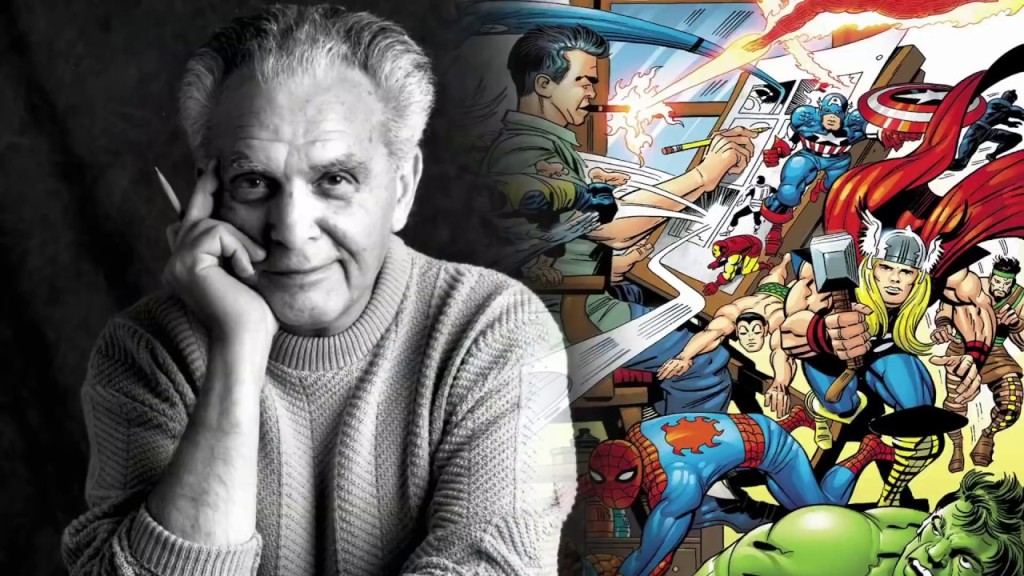In a tribute to the incredible legacy left by Stan Lee in shaping the Marvel Universe, Disney+ has recently unveiled a documentary aptly titled after the iconic artist. This captivating film delves into the life of a man who is often regarded as the sole driving force behind the immense success of some of the world’s most beloved characters. From the moment Tobey Maguire donned the Spider-Man suit in 2002, viewers eagerly anticipated the cameo appearance of the man with the glasses, knowing that he held a special place in the Marvel world.
Yet, the story is more intricate than that, for Marvel’s triumphs over the years cannot be attributed to a single individual alone. The genius of Jack Kirby, the creator of characters like Ant-Man and the Fantastic Four, cannot be overlooked. Jillian Kirby, the granddaughter of this legendary artist, has taken to her social media platforms to share a statement by her father, Neal Kirby, expressing his thoughts on how his father’s contribution is portrayed in the documentary.

Neal Kirby draws attention to the fact that his father’s artistic achievements have been unjustly overshadowed, paralleling similar instances in the art world where rightful credit was not given. He expresses his unease regarding Disney+’s latest offering. It is crucial to recognize that the depth and visual splendour of the Marvel Cinematic Universe would not have been possible without the countless hours that Jack Kirby devoted to the company over several decades. Jillian Kirby’s statement powerfully emphasizes this sentiment.
“[I] understand that, as a “documentary about Stan Lee.” most of the narrative is in his voice, literally and figuratively. It’s not any big secret that there has always been controversy over the parts that were played in the creation and success of Marvel’s characters. Stan Lee had the fortunate circumstance to have access to the corporate megaphone and media, and he used these to create his own mythos as to the creation of the Marvel character pantheon. He made himself the voice of Marvel. So, for several decades he was the “only” man standing, and blessed with a long life, the last man standing (my father died in 1994). It should also be noted and is generally accepted that Stan Lee had a limited knowledge of history, mythology, or science. On the other hand, my father’s knowledge of these subjects, to which I and many others can personally attest, was extensive. Einstein summed it up better; “More the knowledge, lesser the ego. Lesser the knowledge, more the ego. ”If you were to look at a list and timeline of Marvel’s characters from 1960 through 1966, the period in which the vast majority of Marvel’s major characters were created during Lee’s tenure, you will see Lee’s name as a co-creator on every character, with the exception of the Silver Surfer, solely created by my father. Are we to assume Lee had a hand in creating every Marvel character?”
The statement further delves into the persisting problem of proper credit within the realm of comic books. Kirby highlights a well-known dispute between Lee and Steve Ditko as an example:
“Are we to assume that it was never the other co-creator that walked into Lee’s office and said, “Stan, I have a great idea for a character!” According to Lee, it was always his idea. Lee spends a fair amount of time talking about how and why he created the Fantastic Four, with only one fleeting reference to my father. Indeed, most comics historians recognize that my father based the Fantastic Four on a 1957 comic he created for DC, “Challengers of the Unknown,” even naming Ben Grimm (The Thing) after his father Benjamin, and Sue Storm after my older sister Susan. Though the conflict between Lee and my father concerning creator credit gets glanced over with little mention, there is more attention paid to the strife between Lee and Steve Ditko, with Lee’s voice proclaiming, “it was my idea, therefore I created the character,”Ditko’s rebuttal being that his art and storyline is what brought life to Spiderman. In 1501, the Opera del Duomo commissioned a 26-year-old Michelangelo to sculpt a statue of David for the Cathedral of Florence – their idea, their money. The statue is called Michelangelo’s David – his genius, his vision, his creativity.”
“Lee had over 35 years of uncontested publicity, much, naturally, with the backing and blessing of Marvel as he boosted the Marvel brand as a side effect of boosting himself. The decades of Lee’s self-promotion culminated with his cameo appearances in over 35 Marvel films starting with “X-Men” in 2000, thus cementing his status as the creator of all things Marvel to an otherwise unknowing movie audience of millions, unfamiliar with the true history of Marvel comics. My father’s first screen credit didn’t appear until the closing crawl at the end of the film adaptation of Iron Man in 2008, after Stan Lee, Don Heck, and Larry Lieber. The battle for creator’s rights has been around since the first inscribed Babylonian tablet. It’s way past time to at least get this one chapter of literary/art history right. ’Nuff said.”
As Disney continues to utilize Kirby’s enduring legacy to expand their long-standing franchise, his visionary work will be brought to life on the silver screen in the coming years. A fresh iteration of the Fantastic Four is slated to grace theatres in 2025, although the casting details for the new team members remain undisclosed. Nevertheless, it is highly likely that the iconic visual imagery established by Kirby many years ago will be incorporated when Marvel’s beloved first family makes their highly anticipated debut in the Marvel Cinematic Universe (MCU). Furthermore, Paul Rudd’s portrayal of Ant-Man may still have more to offer within the franchise, serving as a poignant reminder of the indelible impact Kirby’s legacy has had on the company.
You can find the complete response to the documentary below:
